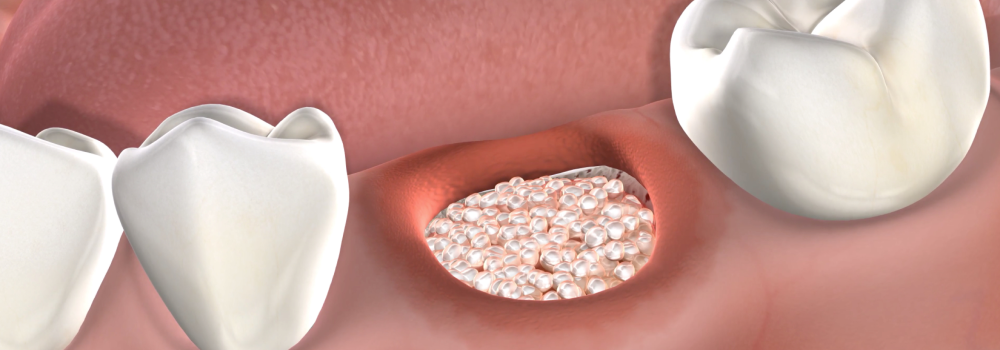Bone grafting is a procedure that restores parts of the jaw and facial skeleton that are lacking the quality or quantity of bone. Missing teeth, traumatic injuries, genetic defects, and other oral health problems can all lead to an insufficient amount of bone in the jaw or face. Your surgeon may recommend a bone graft as a part of a larger treatment plan to replace missing teeth or restore your facial bones after a traumatic injury.
Bone Grafting
Prepare for Dental Implants
For dental implants to integrate with the bone and provide a secure foundation for the new crown, the bone must have the proper height and width to support the implant post. We perform a variety of bone graft procedures depending on your health needs. During your first visit, your surgeon will discuss your options for anesthesia. We may take 3D scans of your mouth to get a detailed digital picture of your teeth and jaw structure.
Socket Preservation
If you need to have a tooth extracted, your oral surgeon may recommend a bone graft to preserve the width of the bone where the tooth is being removed. Our surgeons may recommend this treatment to preserve the socket if you wish to have a dental implant placed at a later date. Usually, the socket preservation procedure is completed at the time of tooth extraction.

Ridge Expansion
Some patients lack the amount of bone necessary for successful implant placement. A unique bone grafting procedure called ridge expansion can be performed to increase the height and width of the bone. This distinctive technique recreates the natural contour of your gums and jaw, improving the aesthetics of your mouth and jawline. Once the graft has healed, the bone will be strong enough and wide enough to support dental implants.
Sinus Lift
When patients need dental implants placed within their upper arch of teeth, sometimes the bone between the jaw and the sinus cavity is too thin to support implant placement. Your oral surgeon can perform a sinus lift procedure, or sinus graft, to correct this problem. During the treatment, your oral surgeon will enter the sinus through the upper jaw and carefully lift the sinus membrane. The bone graft material is then placed in this newly created space to provide adequate bone for the dental implant.
Meet Your Doctors
Nerve Repositioning
Sometimes, the nerve that gives feeling to your chin (the inferior alveolar nerve) needs to be moved to avoid damage and make room for dental implants. During the procedure, your oral surgeon will expose the nerve, then move it slightly to the side. Once your surgeon places the dental implants, the nerve is released to its normal position, and a bone graft is placed to cover the exposed area.
Types of Anesthesia
We offer a variety of anesthetic options to make your experience as pleasant and comfortable as possible. The method of sedation used depends on your preference, the nature of the procedure, and your medical history.
Local, Nitrous Oxide, and IV Sedation
Schedule a Bone Grafting Consultation
Greater Michigan Oral Surgeons & Dental Implant Center offers bone grafting for patients in Flint, Saginaw, Bay City, Owosso, Oxford, and Midland. To schedule a consultation, contact us directly at any of our practice locations.
